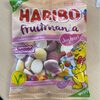E901 - White and yellow beeswax
Functions: Carrier, Emulsifier, Stabiliser, Thickener
Beeswax -cera alba- is a natural wax produced by honey bees of the genus Apis. The wax is formed into "scales" by eight wax-producing glands in the abdominal segments of worker bees, which discard it in or at the hive. The hive workers collect and use it to form cells for honey storage and larval and pupal protection within the beehive. Chemically, beeswax consists mainly of esters of fatty acids and various long-chain alcohols. Beeswax has long-standing applications in human food and flavoring. For example, it is used as a glazing agent or as a light/heat source. It is edible, in the sense of having similar negligible toxicity to plant waxes, and is approved for food use in most countries and the European Union under the E number E901. However, the wax monoesters in beeswax are poorly hydrolysed in the guts of humans and other mammals, so they have insignificant nutritional value. Some birds, such as honeyguides, can digest beeswax. Beeswax is the main diet of wax moth larvae. - Wikipedia
EFSA evaluation: Beeswax -E 901- as a glazing agent and as carrier for flavours (2007-12-20)
-
Schtroumpfs - Haribo - 300 g

-
Mentos fruit - 38 g

-
Happy Box - Haribo - 600 g e

-
Rotella - Haribo - 300g

-
Zanzigliss 300g - Haribo - 300 g

-
Haribo dragolo - 750 g

-
Haribo Tirlibibi - 750 g

-
Haribo - 360g

-
Haribo polka - 300 g

-
Bunte Bärchen - Sugarland - 300g
-
Haribo - 275 g

-
Car en Sac - Haribo - 40 g

-
Number One - Trolli - 1000g

-
maoam - Haribo - 250g

-
Haribo Happy-cola

-
Mao Croqui - Haribo - 250g

-
Gummi Burger - Trolli - 50 g

-
Starmix - Haribo - 175 g

-
Shtourmpfs mini - Haribo - 40 g
-
Rainbow Chewy Dragees - Mentos - 37,5 g

-
SMARTIES Hexa Multipack 6x34g - Nestlé - 204 g

-
cocobat - Haribo - 300 g

-
Mix gominolas

-
Happy'Life - Haribo - 120 g

-
Danette pop chocolat magix 120 g x 4 - Danone - 0.48 kg

-
SMARTIES - Nestlé - 38g

-
Croco Baby - Haribo - 165g

-
Tropifrutti - Haribo - 175g

-
SMARTIES Tube 130g - Nestlé - 130 g

-
GOLDBÄREN UND ERWACHSENE - Haribo - 350 g

-
Nestlé Smarties yaourt à la fraise - 4x 120

-
L'ours d'or - Haribo - 40 g

-
Oeuf au plat 300g - Haribo - 300 g

-
Bunte Tüte - Haribo - 175g

-
Pico-Balla - Haribo - 160g

-
Magic Mouse - SugarLand - 300g

-
Haribo World Mix - 500g

-
Bunte Kakaolinsen - Milka - 100g

-
Phantasia - Haribo - 175g

-
Tropical Fruits - Sugarland - 300g

-
Haribo Color-Rado - 360g

-
Lachgummi - Storck - 200g

-
Haribo Roulette - 25 g

-
Crazy Bee - Roshen - 200 g

-
World Mix - Haribo - 750g
-
Lentilky - Orion - 130 g

-
SMARTIES MINI sachet 315g - Nestle - 315 g

-
NESTLÉ DESSERT Tablette à Pâtisser Chocolat Noir Éclats de Noisettes 170g - 170 g

-
Big Hit cacahuètes enrobées de chocolat au lait - Mister Choc - 300 g

-
Craboo yogurt vanilla - Pilos

-
Nestlé Smarties yaourt à la vanille 4 x 120 g - 480 g

-
Crocos - Lidl - 300 grs

-
Squidgies - Haribo - 140 g

-
fresi pink mix

-
Tropen-Früchte - Katjes - 200g

-
Haribo Matador Dark Mix - 360 g

-
Fruchtkaubonbon-Mix - sweet corner - 400 g

-
Color-Rado - Haribo - 175 g

-
Tubos - Hacendado - 320 g

-
Mentos - 4x38 g

-
CARenSAC - Haribo - 120 g

-
Haribo Konfekt Maxipack - 500 g

-
HARIBO world mix - 120 g

-
Phantasia Maxipack - Haribo - 360 g

-
Push up haribo - 54 g

-
Color-Rado - Haribo - 1kg

-
Multivitamin Bärchen für Kinder - dm Mivolis - 120 g

-
Jelly Beans Sweet - Surgarland - 200 g e

-
Haribo

-
Party BURGER minis - Trolli - 170 g

-
Haribo Goldbären - 250g

-
Big Hit milk chocolate - Mister Choc - 200g
-
nimm2 Lachgummi Softies - Storck - 225 g

-
pinballs - Maoam - 140 g

-
Haribo fruitmania Joghurt - 160g

-
Perles multicolores - Vahiné - 80 g

-
Xuxes top ten - Hacendado - 135 g ,insectos para nuestros hijos e hijas . mejor les damos una manzana.

-
Haribo goldbears

-
Caraboo strawberry yogurt - Pilos
-
Magica - Sweet Corner - 300g

-
Happy Cherry - Haribo - 220 g

-
Tropifrutti - Haribo - 360g

-
Giant Straws - Haribo - 175

-
Biscuits disco 162g - Petit choisi - 162 g

-
Haribo Berries - 200 g

-
Melon Bubble Gum - Fini - 80 g

-
Les schtroumpfs - Haribo - 120g

-
Fruitmania Berry - Haribo - 160 g

-
Daily Milk Marvelous Creations Jelly Popping Candy - Cadbury - 160g

-
Nimm2 Lachgummi Softies Rote Früchte 225G - 225 g

-
Smile Gummi Yoghurt - Storck - 250 g

-
Mentos - 4x38g

-
Crema de manos karité - Deliplus

-
Bonbons tendres drageifies mentos - RAINBOW - 4 * 37,5 g

-
Polka - Haribo - 120g

-
Maoam Kracher - Moam - 200 g

-
Happy cola - Haribo - 40 g

-
schlüpfe - Haribo - 175g

-
smiej zelki sokki - nimm2

-
Ositos de oro - Haribo - 100g

